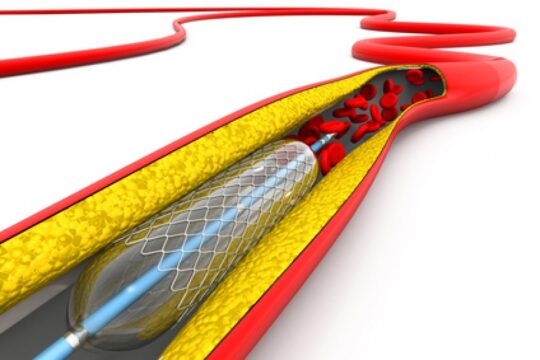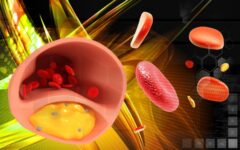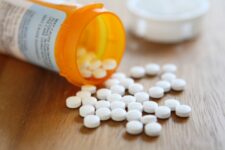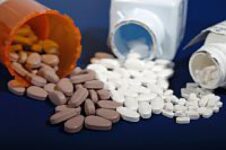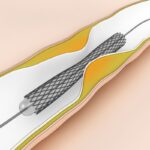Original title: Twelve or 30 Months of Dual Antiplatelet Therapy after Drug-Eluting Stents. Reference: Laura Mauri et al. N Engl J Med 2014;371:2155-66. Dual antiplatelet therapy is recommended after a drug-eluting stent to prevent thrombotic complications. The clinical benefit of this scheme it is not clear beyond one year. Patients were registered to receive a…
Thienopyridine Pretreatment in Non ST Elevation ACS syndrome
Original title: Reappraisal of thienopyridine pretreatment in patients with non-ST elevation acute coronary syndrome: a systematic review and meta-analysis. Reference: Bellemain-Appaix A. et al. BMJ. 2014;Epub ahead of print. This meta-analysis included 7 studies that included a total 32383 patients admitted with non ST elevation ACS; 17545 (54.5%) underwent PCI. These studies were published between 2001 and 2013:…
Greater platelet reactivity in diabetic patients receiving DES and clopidogrel
Original title: Impact of diabetes mellitus and metabolic syndrome on acute and chronic on-clopidogrel platelet reactivity in patients with stable coronary artery disease undergoing drug-eluting stent placement. Reference: Feldman L. et al. Am Heart J. 2014; Epub ahead of print. Diabetes mellitus type 2 (T2DM) or metabolic syndrome patients undergoing drug eluting stent implantation have 3 to 4…
Resistance to Aspirin Associated to Greater Risk of In-Stent Thrombosis and Death
Original title: Aspirin Treatment and Outcomes After Percutaneous Coronary InterventionResults of the ISAR-ASPI Registry. Reference: Katharina Mayer et al. J Am CollCardiol. 2014;64(9):863-871. Aspirin administration, as part of the double antiagregation scheme, is essential in the context of PCI. The correlation between high platelet reactivity to on-clopidogrel treatment and higher events rates has been well established, while data…
Less Bleeding at the Expense of a Higher Risk of Acute Thrombosis with Bivalirudin
Original title: Bivalirudin versus heparin in patients treated with percutaneous coronary Intervention: a meta-analysis of randomised trials. Reference: Salvatore Cassese et al. EuroIntervention 2014;10-online publish-ahead-of-print August 2014. Current recommendations for the use of bivalirudin in PCI patients are mostly based on studies comparing bivalirudin vs. heparin combined with glycoprotein IIb/IIIa inhibitors. Whether bivalirudin is superior to heparin alone…
Best ejection fraction using Metoprolol as pretreatment in acute myocardial infarction
Original title: Long-Term Benefict of Early Pre-Reperfusion Metoprolol Administraction in Patients With Acute Myocardial Infaction. From the METOCARD-CNIC Trial. Reference: Gonzalo Pizarro et, al. J Am Coll Cardiol 20141;63:2356-62 The anterior infarction with ST- segment elevation has a high morbidity and mortality, both in the acute phase as well as after the presence of heart failure, arrhythmias…
3 to 6 months of dual antiplatelet after DES reduced bleeding and did not raise mortality or infarction.
Original title: Meta-analysis of randomized clinical trials comparing short term -vs- long term dual antiplatelet therapy following drug eluting stents. Reference: El-Hayek G et al. Am J Cardiol. 2014; Epub ahead of print. This meta-analysis examined the data of four randomized and controlled studies (EXCELLENT, PRODIGY, RESET y OPTIMIZE) including 8157 patients receiving sirolimus, paclitaxel, everolimus or zotarolimus…
Increased security with bivalirudin than with heparin alone in patients without ST segment.
Original title: Heparin monotherapy or bivalirudin during percutaneous coronary intervention in patients with non-ST-segment elevation acute coronary syndromes or stable ischemic heart disease: results from the Evaluation of Drug-Eluting Stents and Ischemic Events registry. Reference: Bangalore S et al. CircCardiovascInterv. 2014;Epub ahead of print. Bivalirudin compared to unfractionated heparin as monotherapy is associated with a lower risk of…
Higher event rate in those with non-ST elevation ACS who received revascularization at PLATO study. Beyond this, ticagrelor reduced mortality.
Original title: Ticagrelor vs. clopidogrel in patients with non-ST-elevation acute coronary syndrome with or without revascularization: results from the PLATO trial. Reference: Lindholm D et al. Eur Heart J. 2014; Epub ahead of print. The PLATO study randomized 18624 patients with ACS to aspirin and ticagrelor (180 mg loading dose followed by 90 mg every 12 hours) versus…
At least one month of antiplatelet seems sufficient after a zotarolimus -eluting stent
Original title: Lack of association between dual antiplatelet therapy use and stent thrombosis between 1 and 12 months following Resolute zotarolimus-eluting stent implantation. Reference: Silber S, Kirtane AJ, Belardi JA, et al. Eur Heart J. 2014; Epub ahead of print. Dual antiplatelet aggregation optimal time after implantation of a new generation drug-eluting stent (DES) is still discussed. This…
Almost 40 % of those who initially receive clopidogrel then switch to prasugrel or ticagrelor in clinical practice.
Original title: In-hospital switching of oral P2Y12 inhibitor treatment in patients with acute coronary syndrome undergoing percutaneous coronary intervention: Prevalence, predictors and short-term outcome. Reference: Dimitrios Alexopoulos et al. Am Heart J 2014;167:68-76.e2. Given the availability of 3 Oral P2Y12 receptor inhibitors (clopidogrel, prasugrel, and ticagrelor) with different safety and efficacy profiles, the change from one to another…
